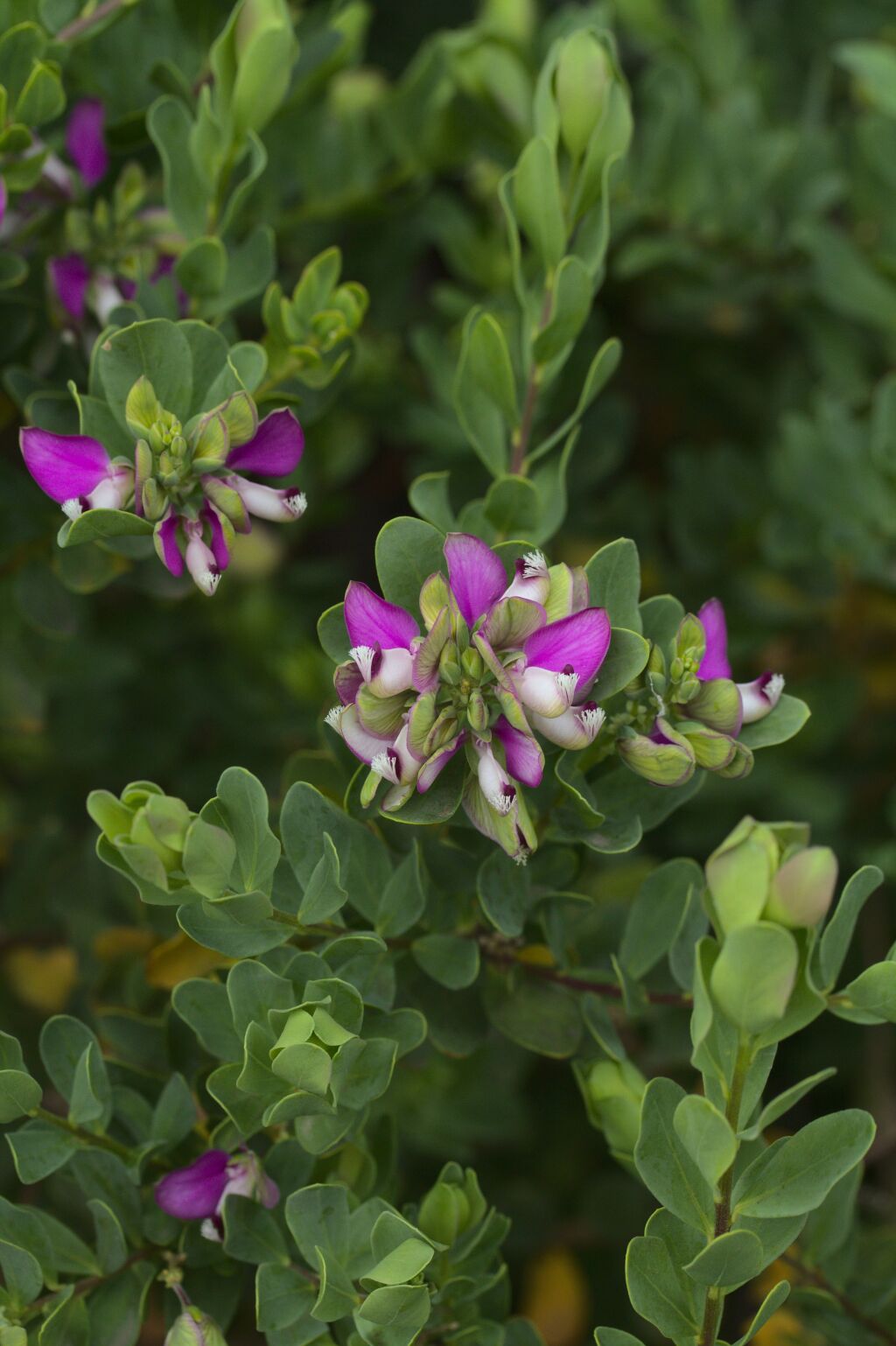Polygala myrtifolia
L.Erect to spreading shrub to c. 3(–4) m high; stems sparsely puberulent when young. Leaves obovate, 15–40 mm long, 5–20 mm wide, obtuse to shallowly emarginate. Flowers mainly mauve, in terminal racemes mostly 1.5–4 cm long; bracts and bracteoles ovate, c. 1.5 mm long, semi-persistent; pedicels 3–8 mm long; sepals free, the upper and lower ones ovate, 5.5–6.5 mm long, wings broad-ovate, 12–18 mm long, 7–13 mm wide, many-nerved, green on outside, bright mauve within; corolla slightly shorter than sepals, keel white or pale mauve, with a maroon apical blotch, appendages c. 5 mm long, lateral petals unequally bilobed, much shorter than keel. Capsule c. orbicular, emarginate at apex, 8–10 mm long and wide; seed hirsute, c. 4.5 mm long, with aril c. 1.5 mm long. Flowers most of year, mainly Aug.–Dec.
MuM, Wim, GleP, Brid, VVP, GipP, OtP, WaP, Gold, HSF, OtR. Abundant in coastal shrubland on the Mornington and Bellarine Peninsulas; locally established ner Portland, Cape Otway and Bairnsdale coasts, and inland at Dimboola and Lake Hindmarsh.
Known to have been established near Brighton and Mentone since 1886, presumably from garden-grown plants. Polygala myrtifolia var. grandiflora Hook., and its horticulturally-derived hybrid P. x dalmaisiana (with other parent P. fruiticosa Berg.) are both cultivated and are both apparently non-invasive. The former differs in having larger (1.5–2 cm long) rich purple flowers, while the hybrid has at least some leaves opposite.
 Spinning
Spinning




